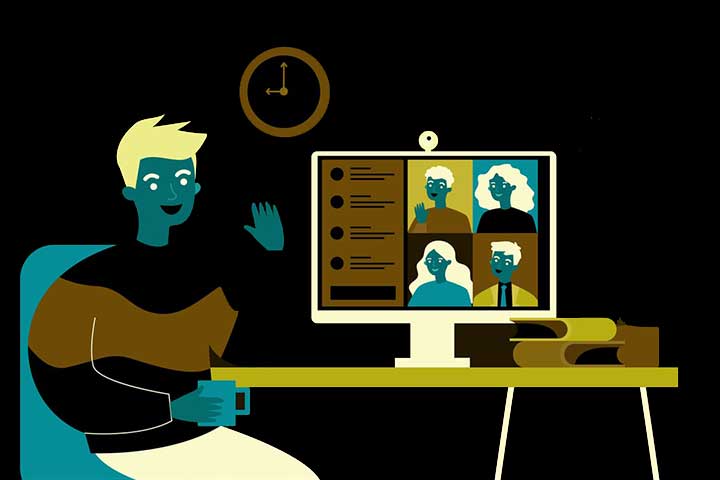Communication Code: Meaning And Types

Several elements are involved in a communication process that is essential for it to be carried out successfully. In this case, we refer to the communication code: the language where the message is transmitted so that it is easily understood between the sender and receiver.
It is vitally important that both elements, the sender, are responsible for encoding the information so that it reaches the receiver, who carries out the decoding process to understand it, know each other and handle the same code.
For example, if a message is written in French and the receiver knows this language, he can perfectly decipher the message; otherwise, communication would not be optimal.
To get more into the subject, today, we talk about the communication code, its meaning, and types, as well as the different kinds of code that exist and elements that make up communication.
What is the communication code?
The communication code is the set of signs and signals used to transmit a message. It is a fundamental part of the communicative process between the sender and receiver to be carried out effectively.
In this sense, both elements must navigate in the same code; otherwise, the message would not arrive properly and would not be interpreted correctly, as it happens when a person speaks to us in a language that we do not know.
The elements involved in the communication process are:
Issuer: carries out the elaboration of the message and its implementation. It is responsible for optimally configuring the message, so the receiver decodes it.
Message ensures that the message reaches the recipient correctly and in the easiest way to understand.
Channel: medium through which the message is sent.
Code: those that both the sender and the receiver must interpret together to communicate effectively.
Receiver: a person who receives the message and decrypts it to correct the communication.
Noise is a negative element since it represents a communication barrier that does not lead to fluidity: loud music in a bar, physical or hearing problems, technical problems, or technological defects, for example.
Feedback or feedback: two-way communication. The sender and receiver exchange their roles throughout the communication process. This way, feedback helps who sends the message to know if the receiver has received and interpreted it correctly.
Context: space-time environment where communication takes place.
After all, we live in a globalized world where communication is increasingly important. To know what is happening around us, we need to communicate, understand each other and maintain contact with people.
All the techniques we use intending to exchange ideas are applied in different fields and depending on the forms of expression we will see below. But the idea is simple: know exactly what the other person wants to say and communicate with an appropriate tone so that the receiver or addressee accepts it. Say it so that it is understood as soon as you hear it.
What are the advantages of this communication process?
- Get immediate responses to the message given to other people.
- It is most effective when people are physically close.
- Identify a person even when we are not seeing it.
- Corrections of the message to the sender itself are easier.
Also Read: Communication 2.0: Immediate And Back And Forth
Types of communication codes
There are two fundamental types of communication code: linguistic and non-linguistic.
Linguistic code
Here intervenes, the oral or written language that is necessary for the communication between the sender and receiver to take place.
Among the linguistic ones, we can distinguish two levels:
- Signifier, or plane of expression: the phonic image we have of a particular sound chain and allows us to think words without pronouncing them.
- Meaning, or level of content: concept or image we associate in our mind with a concrete signifier.
On the other hand, these can be natural or written.
- Natural communication code: that which is perceived through the senses of hearing and sight: gestures and non-verbal communication.
- Written communication code: it is perceived by reading; therefore, prior learning is required; They constitute a closed system in itself.
The linguistic code comprises language systems and units, of which it is possible to make combinations to successfully elaborate and transmit messages subject to specific rules depending on the language. It should be noted that the elements that make up a linguistic code must be interpretable in a semantic way so that an exchange of information can be carried out.
Non-linguistic code
In this case, oral or written language does not work, but they are easily recognized by the sender and receiver when starting the communication process: a signal, for example.
In this regard, a language is not needed to transmit the message; both the sender and the receiver must know the meaning for the code to be helpful.
Non -linguistic codes are divided into three:
- Visual non-linguistic code: transmitted through sight; the receiver must see the signal the sender sends to understand it.
- Non-linguistic gestural code: is transmitted through gestures.
- Auditory non-linguistic code: is transmitted through the ear; the receiver has to listen to the signal to receive it and understand the message.
Examples of codes in communication
- Human languages.
- Pablo tells his daughter that he will take her to the movies.
- Communication code: ENGLISH
- Artificial codes.
- In the «Stranger Things» series, there is dubbing for the deaf.
- Communication code: the language of the deaf.
- Public signs.
- Maria is driving and sees a “no trespassing” sign.
- The communication code: public signs, precisely, traffic signs.
